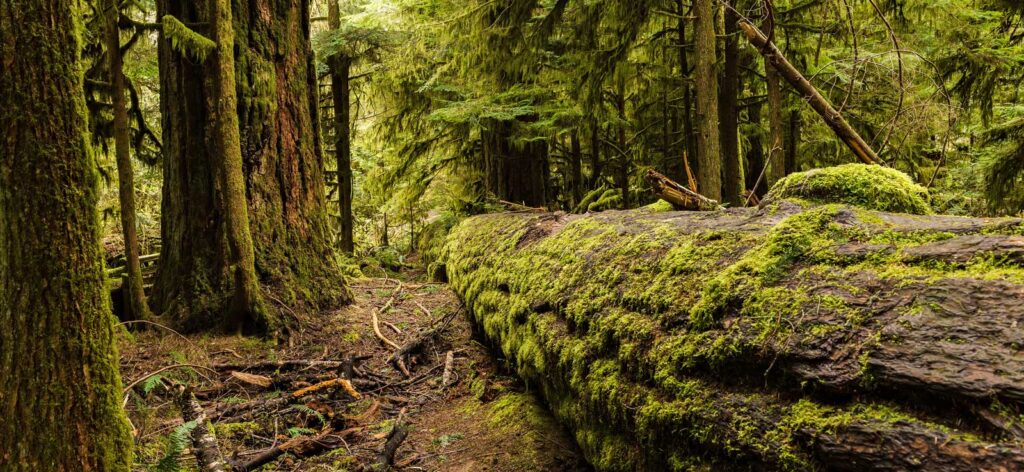Happy Mother’s Day
ON THE PATH
TO 2030
A REPORT CARD ON PROGRESS TO
PROTECT LAND AND OCEAN ACROSS
CANADA
LEVERAGING
PROTECTED AREAS FOR
CLIMATE ACTION
When Nature Thrives,
So Do We
OUR VISION
Safeguard Canada’s wild landscapes
and seascapes, now and forever.
We fight for nature protections that will sustain people, communities, wildlife and the planet.
Parks and Protected Areas
Ocean
Climate Change
Wildlife
When nature thrives, so do we.
Protecting Nature – How’s Canada Doing?
Science tells us that we need to protect half of Canada’s land, freshwater, and ocean for nature to have the chance to recover and thrive into the future.
Protecting nature in Canada requires all governments to do their part. CPAWS has been tracking and evaluating progress towards this goal across the country, and we’ve mapped out all currently protected and opportunity areas.
Click on the provinces and territories below to learn more about their accomplishments, efforts, and shortcomings. For more detailed information, please see our 2025 Progress Report.
19.7%
protected
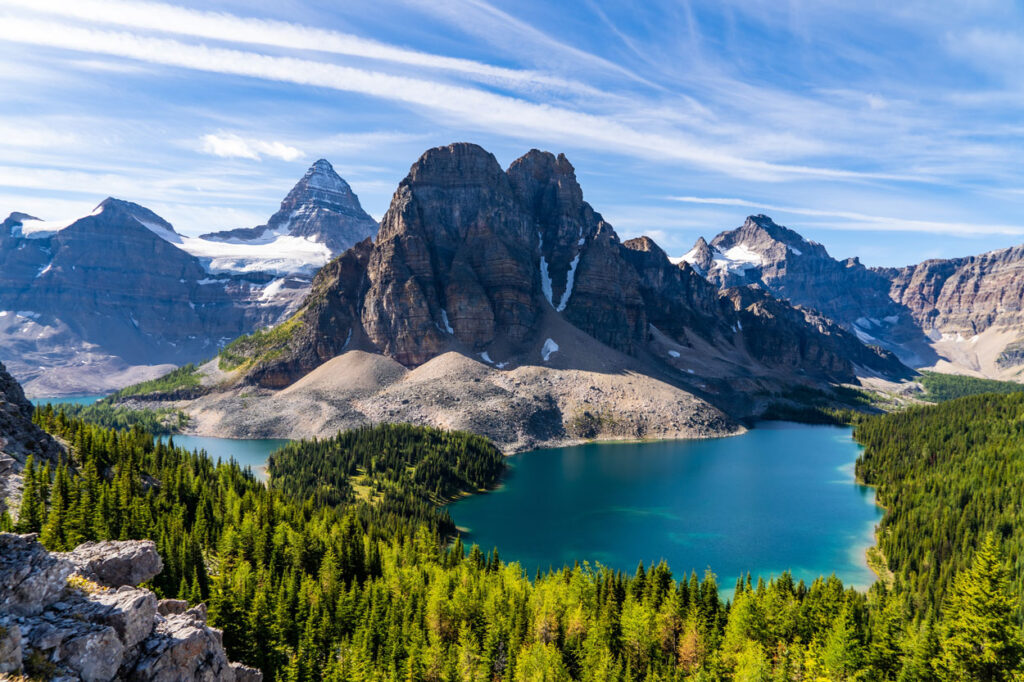
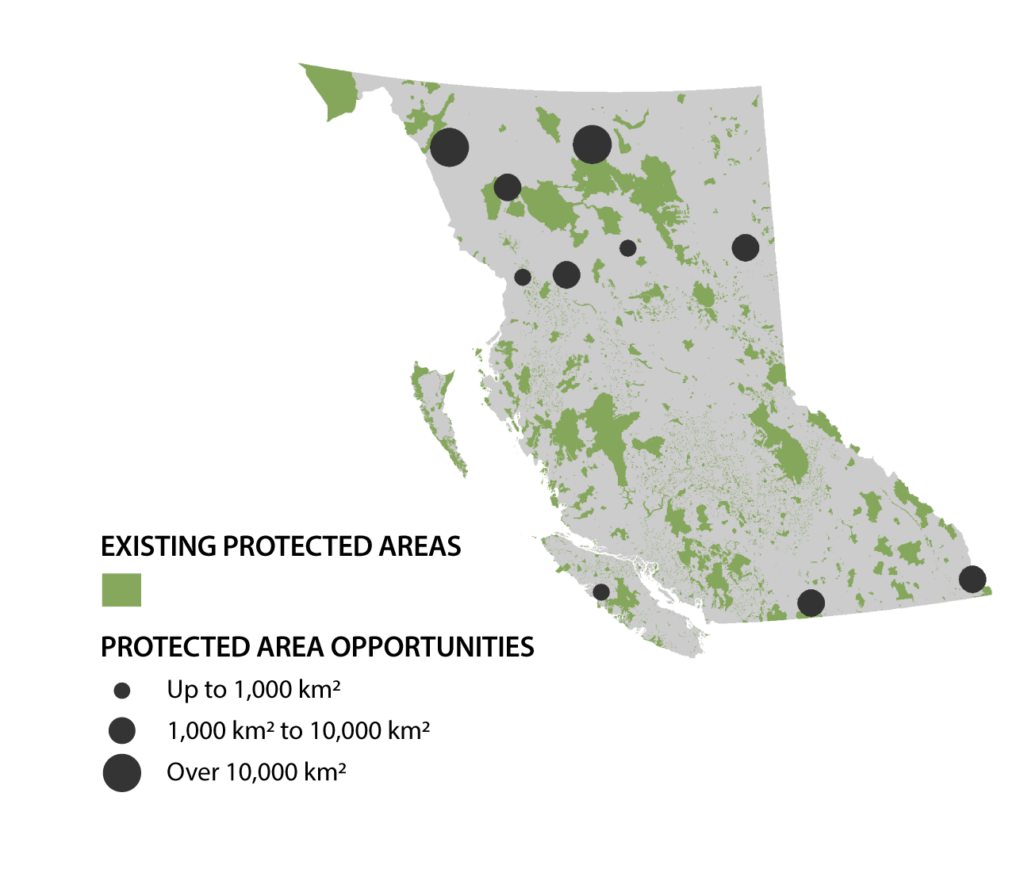
Highlights
-
Committed to 30% land protection by 2030.
-
$300 million conservation fund established.
-
First-ever Coastal Marine Strategy released.
-
Klinse-za Park expanded.
Lowlights
-
Insufficient funding for land-use planning slows progress.
Take action to protect land, freshwater, ocean and wildlife across British Columbia
We couldn’t do what we do without your help. Whether it’s taking action on a campaign by signing a petition or writing a letter, donating to our work, or volunteering your time, your support matters.
*in Other Effective Area-Based Conservation Measures (OECMs)
*Grade is based on progress made towards Canada’s 2020 protection targets

Highlights
-
Committed to 30% land protection by 2030.
-
$300 million conservation fund established.
-
First-ever Coastal Marine Strategy released.
-
Klinse-za Park expanded.
Lowlights
-
Insufficient funding for land-use planning slows progress.
Take action to protect land, freshwater, ocean and wildlife across British Columbia
We couldn’t do what we do without your help. Whether it’s taking action on a campaign by signing a petition or writing a letter, donating to our work, or volunteering your time, your support matters.
15.5%
protected

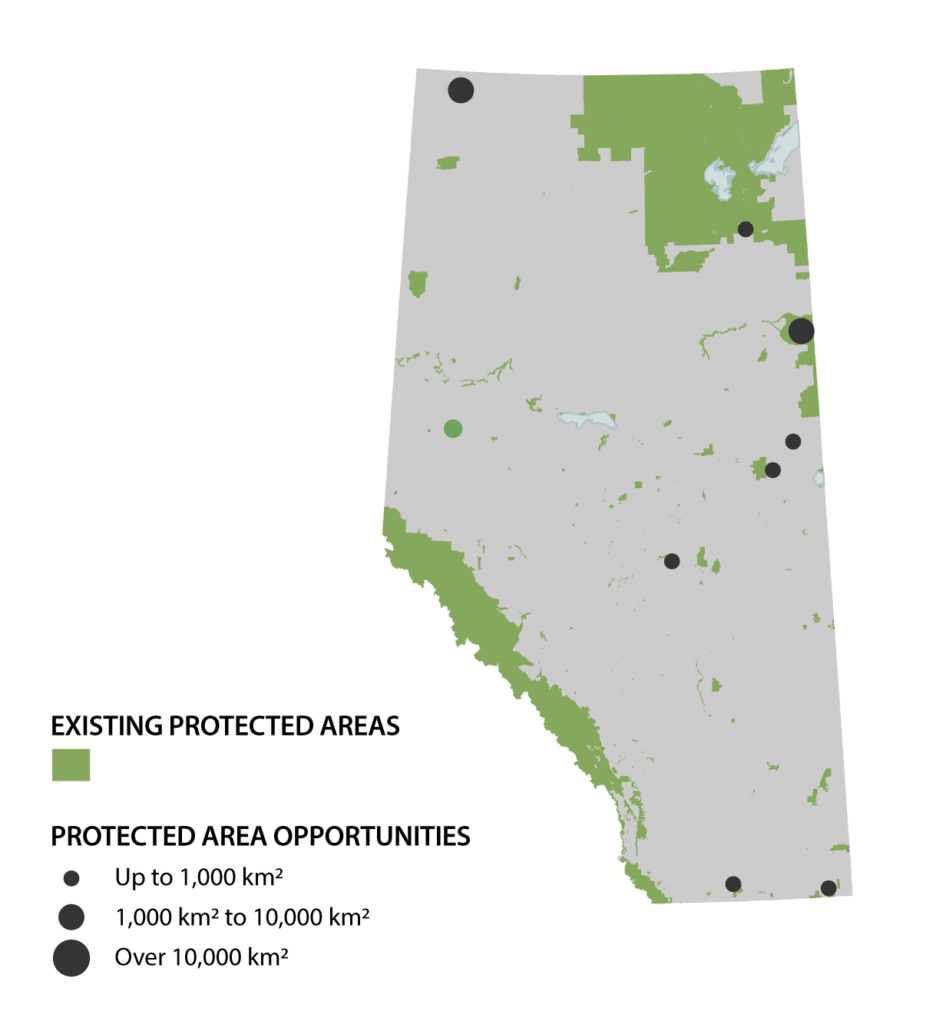
Highlights
-
Expanded parks through private land donations.
-
Public support for conservation reflected in parks engagement.
Lowlights
-
Removed protection from 12 areas.
-
Policy changes allow more industrial activity in parks.
-
Weak caribou recovery efforts.
-
New law permits resort developments in protected areas.
Repeal the All-Season Resorts Act:
Protect Alberta’s Parks and Public Lands
Last December, the Government of Alberta passed Bill 35, turning the All-Season Resorts Act (ASRA) into legislation and exposing our parks to delisting and our public land to privatization. This was profoundly undemocratic and unethical, and we did not agree to it. Alberta’s parks, protected areas, and public lands belong to ALL of us. Full stop. We will not stand idly by while the ASRA strips us of the beloved places that belong to all of us — let’s take action, together.
*in Other Effective Area-Based Conservation Measures (OECMs)
*Grade is based on progress made towards Canada’s 2020 protection targets

Highlights
-
Expanded parks through private land donations.
-
Public support for conservation reflected in parks engagement.
Lowlights
-
Removed protection from 12 areas.
-
Policy changes allow more industrial activity in parks.
-
Weak caribou recovery efforts.
-
New law permits resort developments in protected areas.
Repeal the All-Season Resorts Act:
Protect Alberta’s Parks and Public Lands
Last December, the Government of Alberta passed Bill 35, turning the All-Season Resorts Act (ASRA) into legislation and exposing our parks to delisting and our public land to privatization. This was profoundly undemocratic and unethical, and we did not agree to it. Alberta’s parks, protected areas, and public lands belong to ALL of us. Full stop. We will not stand idly by while the ASRA strips us of the beloved places that belong to all of us — let’s take action, together.
9.8%
protected

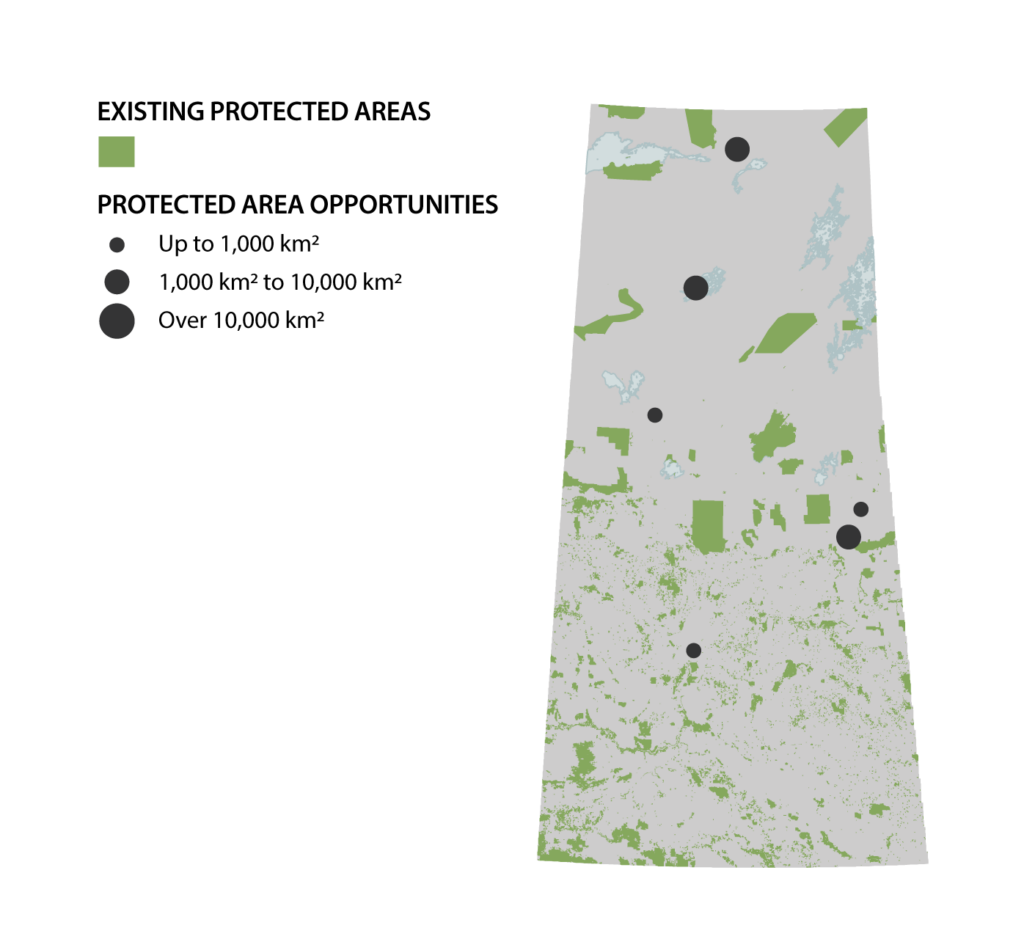
Highlights
-
Indigenous-led conservation continues to grow. The Government of Saskatchewan still needs to do much more to support this work.
Lowlights
-
Slow progress in protecting critical habitats.
-
The Government of Saskatchewan has shown reluctance to fully embrace the potential of indigenous-led conservation.
-
Caribou habitat remains unprotected.
-
Ongoing loss of native grasslands.
Take Action to Protect Saskatchewan’s Nature!
CPAWS is continually striving to establish protected areas on land and in the ocean, improve management of existing protected areas, and make progress on tackling climate change and protecting species at risk.
*in Other Effective Area-Based Conservation Measures (OECMs)
*Grade is based on progress made towards Canada’s 2020 protection targets

Highlights
-
Indigenous-led conservation continues to grow. The Government of Saskatchewan still needs to do much more to support this work.
Lowlights
-
Slow progress in protecting critical habitats.
-
The Government of Saskatchewan has shown reluctance to fully embrace the potential of indigenous-led conservation.
-
Caribou habitat remains unprotected.
-
Ongoing loss of native grasslands.
Take Action to Protect Saskatchewan’s Nature!
CPAWS is continually striving to establish protected areas on land and in the ocean, improve management of existing protected areas, and make progress on tackling climate change and protecting species at risk.
11.1%
protected
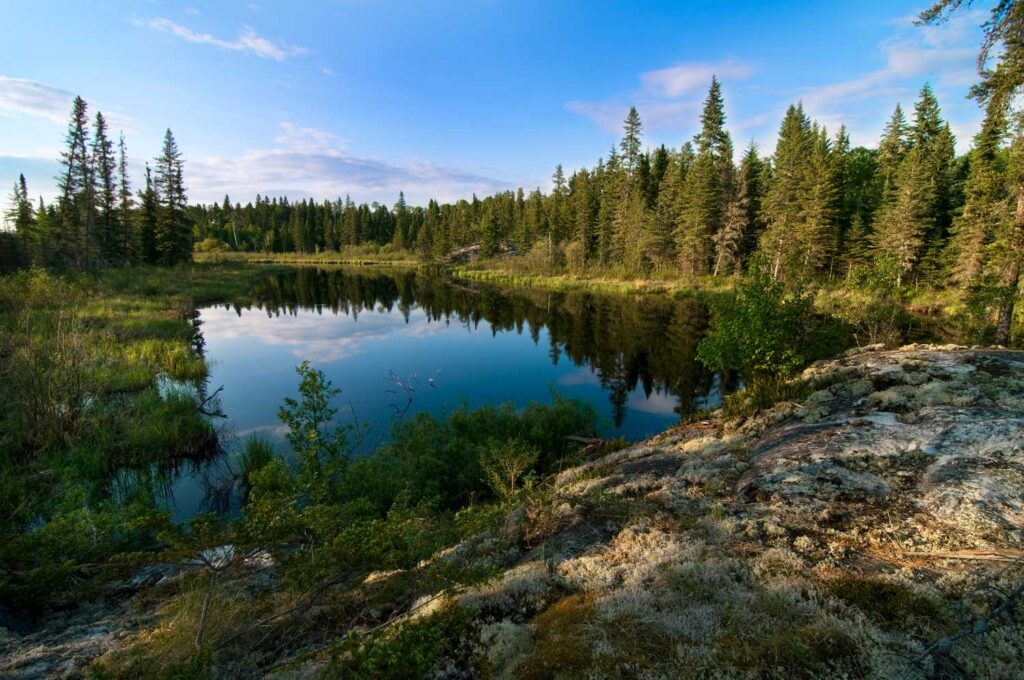
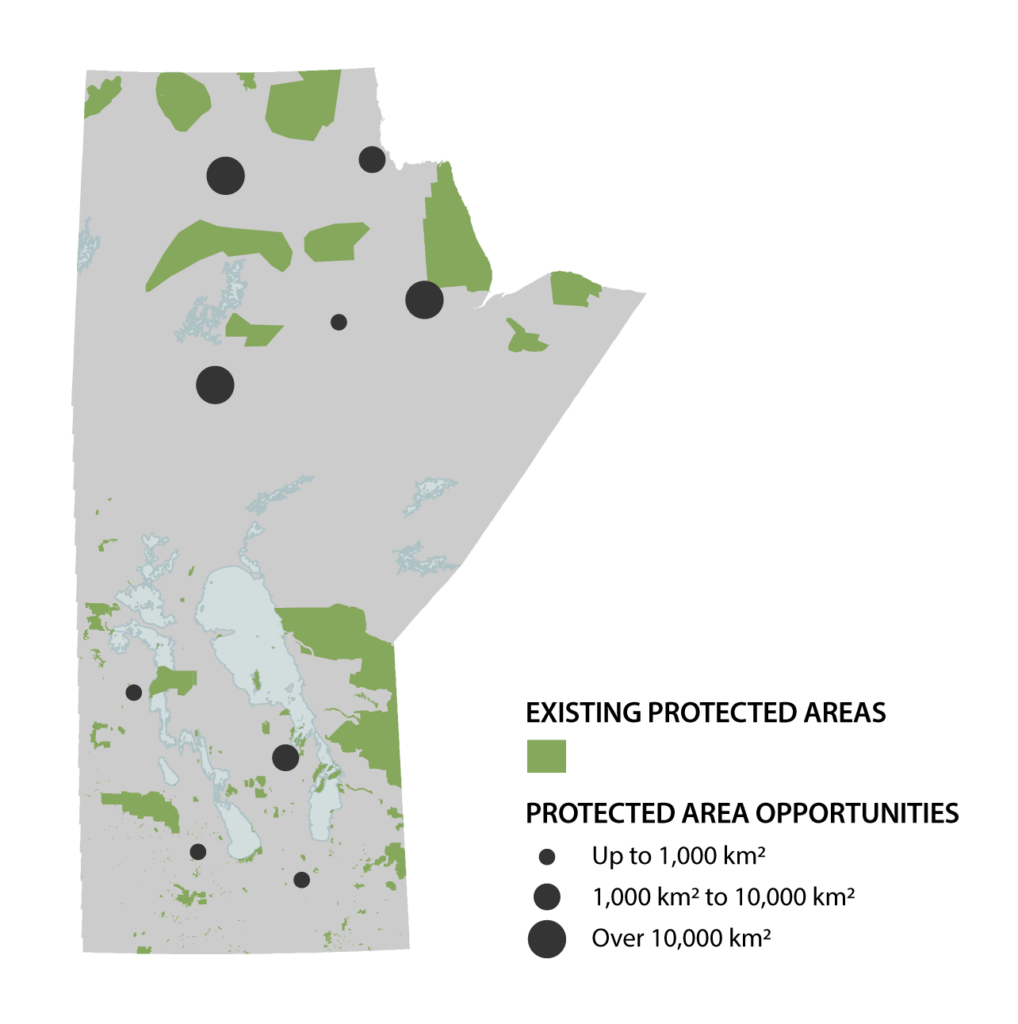
Highlights
-
Committed to 30% protection by 2030.
-
Planning a 42,808 km² Indigenous conservation area.
-
Seal River Watershed IPCA feasibility study underway.
Lowlights
-
Conservation ignored in 2024 provincial budget.
Take Action to Protect Manitoba’s Nature!
CPAWS is continually striving to establish protected areas on land and in the ocean, improve management of existing protected areas, and make progress on tackling climate change and protecting species at risk.
*in Other Effective Area-Based Conservation Measures (OECMs)
*Grade is based on progress made towards Canada’s 2020 protection targets

Highlights
-
Committed to 30% protection by 2030.
-
Planning a 42,808 km² Indigenous conservation area.
-
Seal River Watershed IPCA feasibility study underway.
Lowlights
-
Conservation ignored in 2024 provincial budget.
Take Action to Protect Manitoba’s Nature!
CPAWS is continually striving to establish protected areas on land and in the ocean, improve management of existing protected areas, and make progress on tackling climate change and protecting species at risk.
10.9%
protected
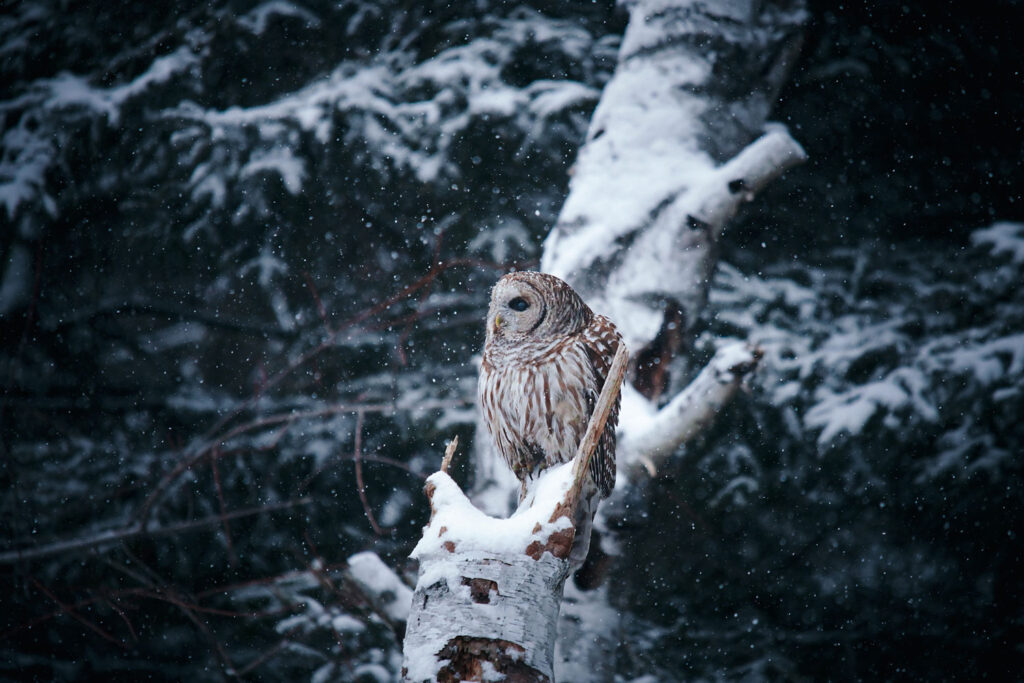
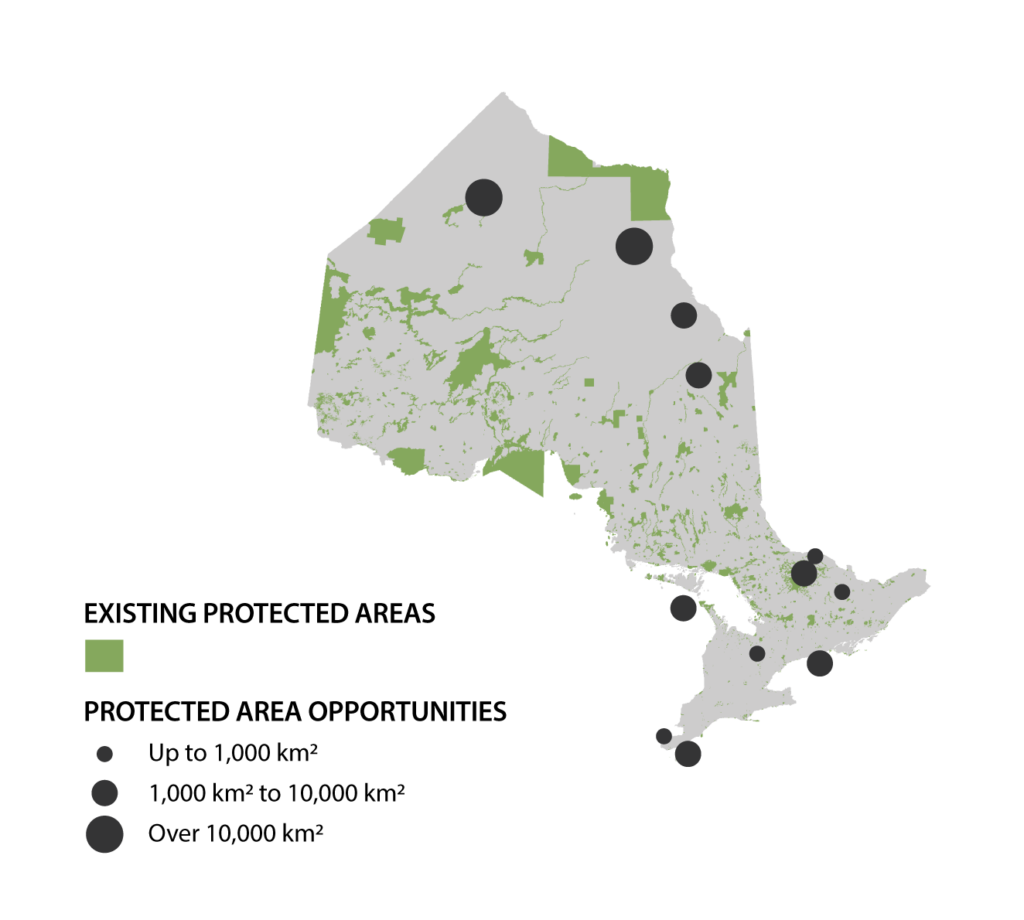
Highlights
-
New Uxbridge Urban Provincial Park established.
Lowlights
-
Weak support for Indigenous-led conservation.
-
Prioritizing harmful development over nature.
-
Delayed protection for boreal caribou habitat.
Take Action to Protect Ontario’s Nature!
Say NO to Bill 5
As Trump threatens us, Ford’s response is to grab Trump-like powers by proposing a new omnibus bill that if passed would gut protections for vulnerable wildlife, fast track mining and development projects, trample Indigenous rights, silence local voices and create law-free zones for trusted proponents or areas as designated by cabinet.
*in Other Effective Area-Based Conservation Measures (OECMs)
*Grade is based on progress made towards Canada’s 2020 protection targets

Highlights
-
New Uxbridge Urban Provincial Park established.
Lowlights
-
Weak support for Indigenous-led conservation.
-
Prioritizing harmful development over nature.
-
Delayed protection for boreal caribou habitat.
Take Action to Protect Ontario’s Nature!
Say NO to Bill 5
As Trump threatens us, Ford’s response is to grab Trump-like powers by proposing a new omnibus bill that if passed would gut protections for vulnerable wildlife, fast track mining and development projects, trample Indigenous rights, silence local voices and create law-free zones for trusted proponents or areas as designated by cabinet.
16.9%
protected
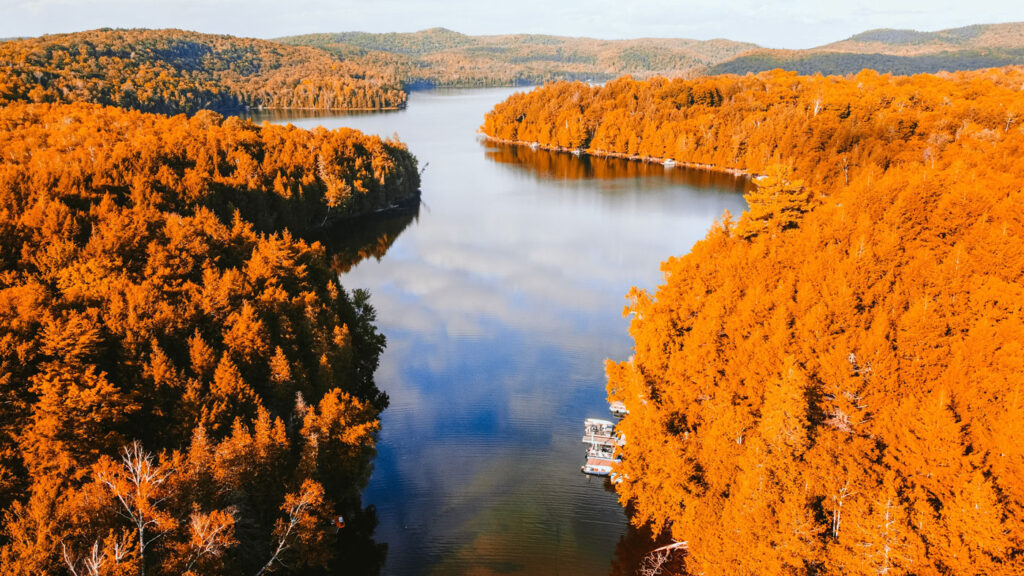
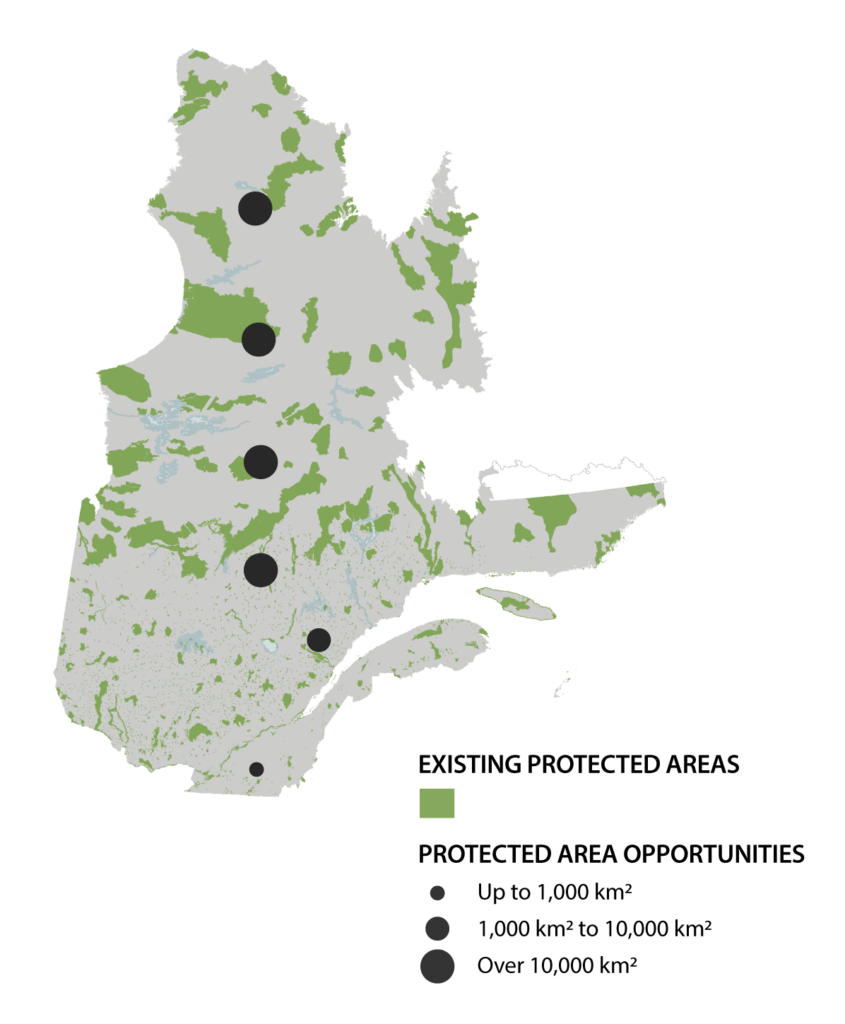
Highlights
-
2030 Nature Plan launched, with Indigenous-led conservation included.
-
New conservation tools introduced to protect land.
Lowlights
-
Indigenous Protected Areas remain unrecognized.
-
Conflicts between environmental and industrial priorities persist.
Take Action to Protect Quebec’s Nature!
CPAWS is continually striving to establish protected areas on land and in the ocean, improve management of existing protected areas, and make progress on tackling climate change and protecting species at risk.
*in Other Effective Area-Based Conservation Measures (OECMs)
*Grade is based on progress made towards Canada’s 2020 protection targets

Highlights
-
2030 Nature Plan launched, with Indigenous-led conservation included.
-
New conservation tools introduced to protect land.
Lowlights
-
Indigenous Protected Areas remain unrecognized.
-
Conflicts between environmental and industrial priorities persist.
Take Action to Protect Quebec’s Nature!
CPAWS is continually striving to establish protected areas on land and in the ocean, improve management of existing protected areas, and make progress on tackling climate change and protecting species at risk.
10.3%
protected
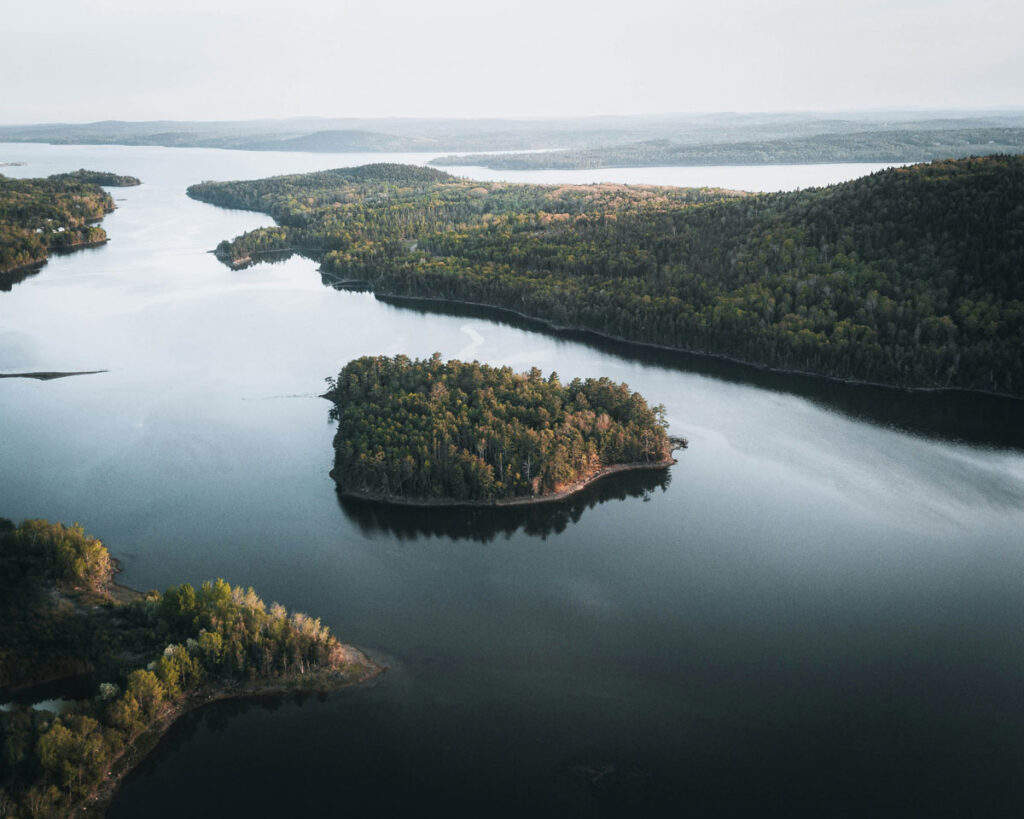
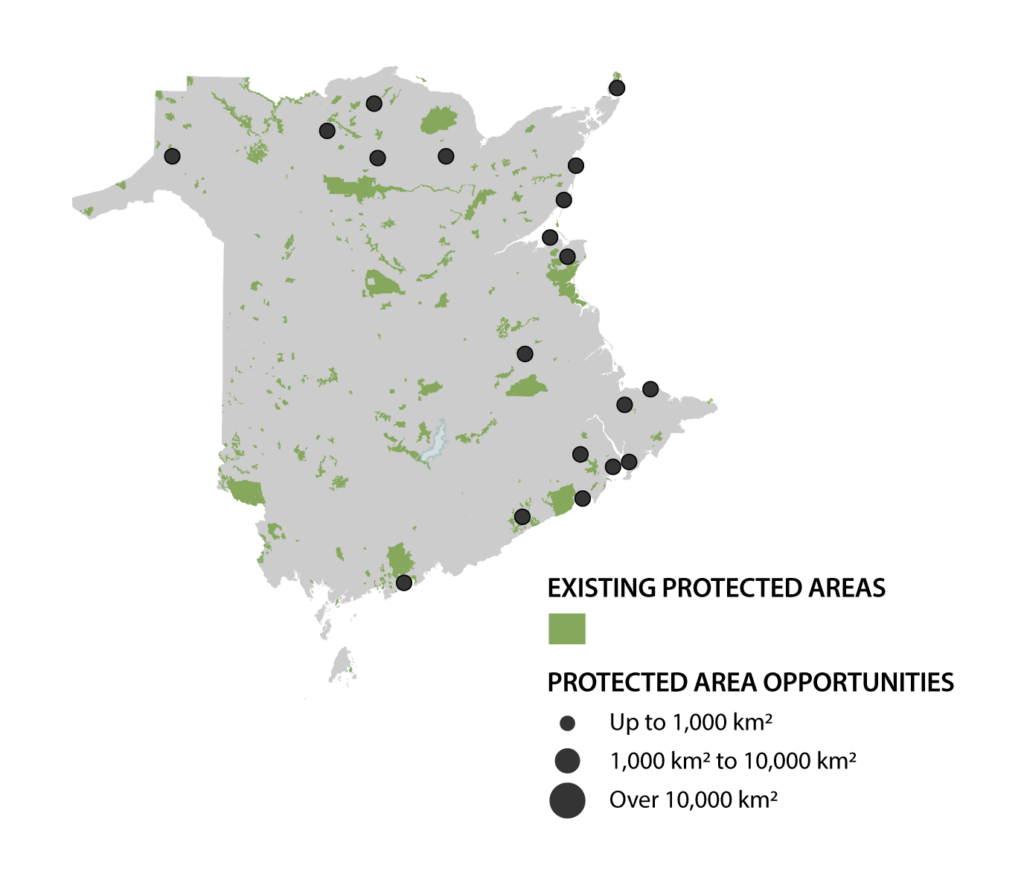
Highlights
-
Protected areas doubled to 10%
-
Committed to reaching 15% protection and planning for 30%.
Lowlights
-
Poor collaboration with Indigenous Nations on conservation efforts.
Take Action to Protect New Brunswick’s Nature!
Every voice counts to help protect our environment. Whether it’s speaking out online, donating to support our mission, or volunteering your time to support our campaigns, your support is essential!
*in Other Effective Area-Based Conservation Measures (OECMs)
*Grade is based on progress made towards Canada’s 2020 protection targets

Highlights
-
Protected areas doubled to 10%
-
Committed to reaching 15% protection and planning for 30%.
Lowlights
-
Poor collaboration with Indigenous Nations on conservation efforts.
Take Action to Protect New Brunswick’s Nature!
Every voice counts to help protect our environment. Whether it’s speaking out online, donating to support our mission, or volunteering your time to support our campaigns, your support is essential!
13.6%
protected

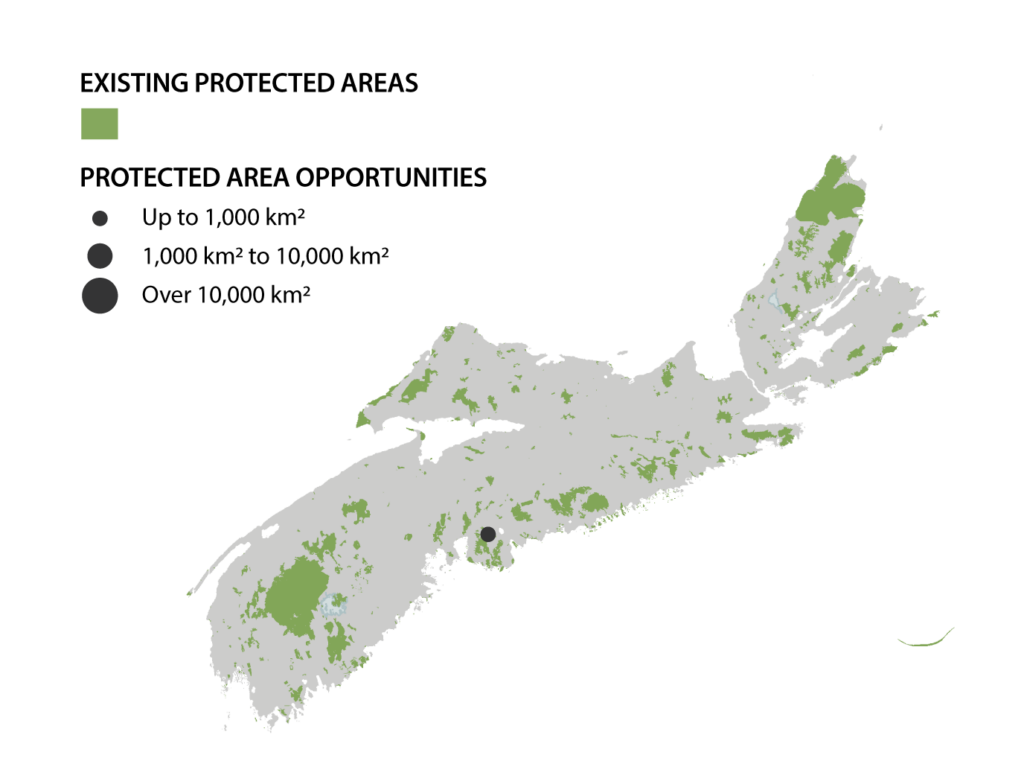
Highlights
-
62 new protected areas legally designated.
-
Canada-Nova Scotia Nature Agreement signed for $28.5 million in conservation funding.
Lowlights
-
Over 100 promised protected areas still waiting for designation.
Take Action to Protect Nova Scotia’s Nature!
CPAWS is continually striving to establish protected areas on land and in the ocean, improve management of existing protected areas, and make progress on tackling climate change and protecting species at risk.
*in Other Effective Area-Based Conservation Measures (OECMs)
*Grade is based on progress made towards Canada’s 2020 protection targets

Highlights
-
62 new protected areas legally designated.
-
Canada-Nova Scotia Nature Agreement signed for $28.5 million in conservation funding.
Lowlights
-
Over 100 promised protected areas still waiting for designation.
Take Action to Protect Nova Scotia’s Nature!
CPAWS is continually striving to establish protected areas on land and in the ocean, improve management of existing protected areas, and make progress on tackling climate change and protecting species at risk.
7%
protected
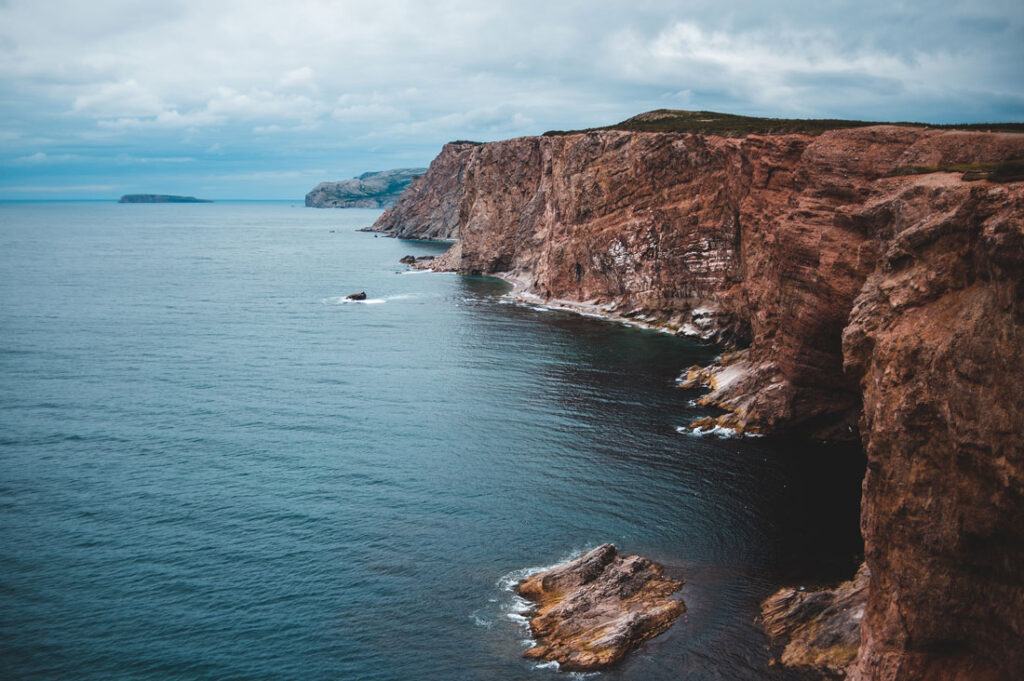

Highlights
-
Planning for a National Urban Park in St. John’s.
-
Efforts to designate Little River as an Indigenous conservation area.
Lowlights
-
Slow progress on new protected areas.
-
Government prioritizes development over conservation.
Take Action to Protect Newfoundland and Labrador’s Nature!
CPAWS is continually striving to establish protected areas on land and in the ocean, improve management of existing protected areas, and make progress on tackling climate change and protecting species at risk.
*in Other Effective Area-Based Conservation Measures (OECMs)
*Grade is based on progress made towards Canada’s 2020 protection targets

Highlights
-
Planning for a National Urban Park in St. John’s.
-
Efforts to designate Little River as an Indigenous conservation area.
Lowlights
-
Slow progress on new protected areas.
-
Government prioritizes development over conservation.
Take Action to Protect Newfoundland and Labrador’s Nature!
CPAWS is continually striving to establish protected areas on land and in the ocean, improve management of existing protected areas, and make progress on tackling climate change and protecting species at risk.
5.1%
protected
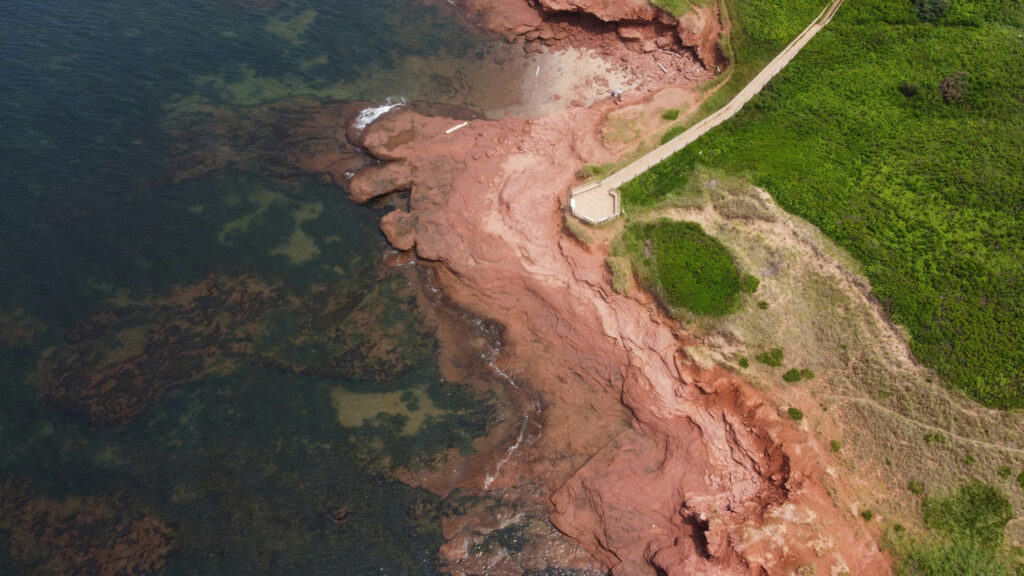
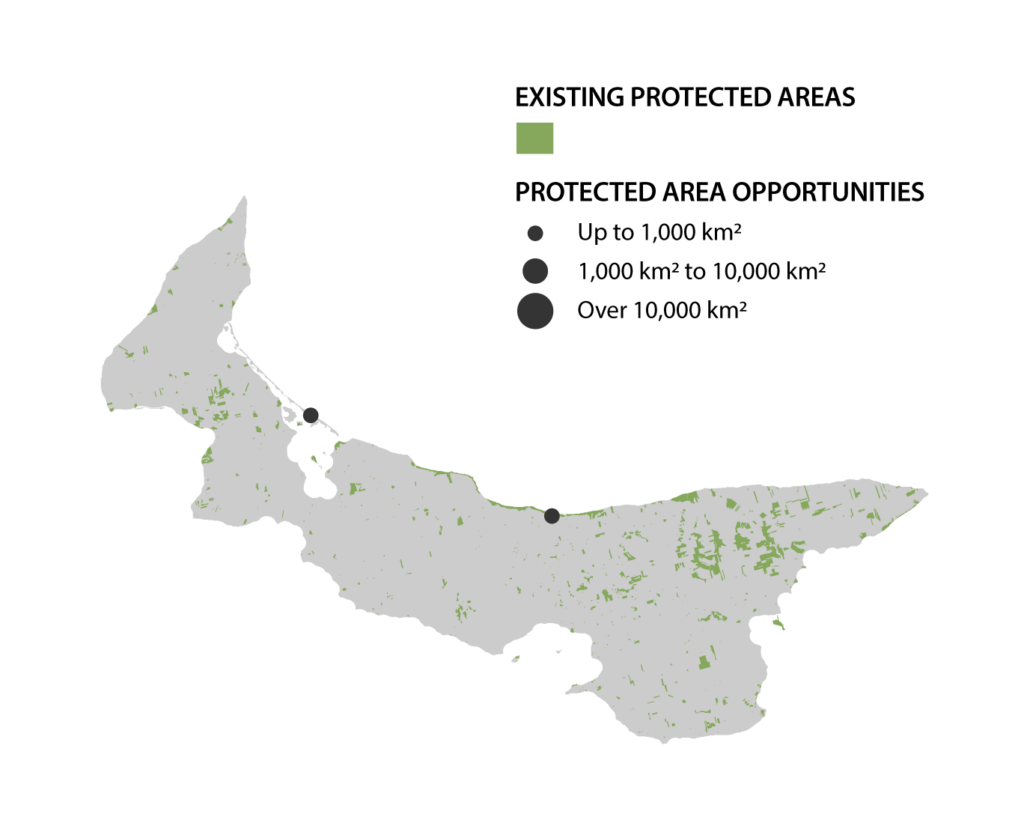
Highlights
-
New Pituamkek National Park Reserve established.
-
Additional land added to Prince Edward Island National Park.
Lowlights
-
High real estate prices make land acquisition difficult for conservation efforts.
*in Other Effective Area-Based Conservation Measures (OECMs)
*Grade is based on progress made towards Canada’s 2020 protection targets

Highlights
-
New Pituamkek National Park Reserve established.
-
Additional land added to Prince Edward Island National Park.
Lowlights
-
High real estate prices make land acquisition difficult for conservation efforts.
10.2%
protected
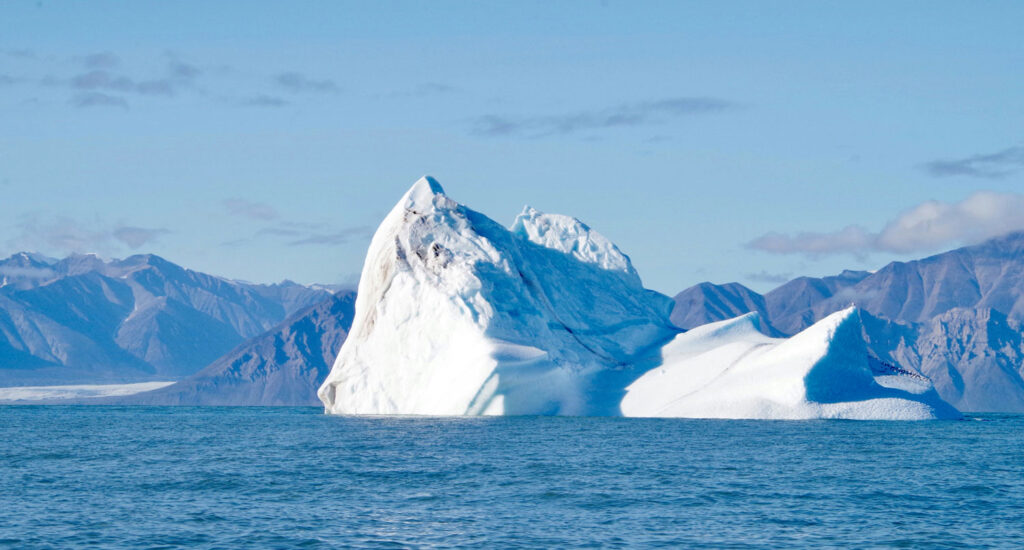
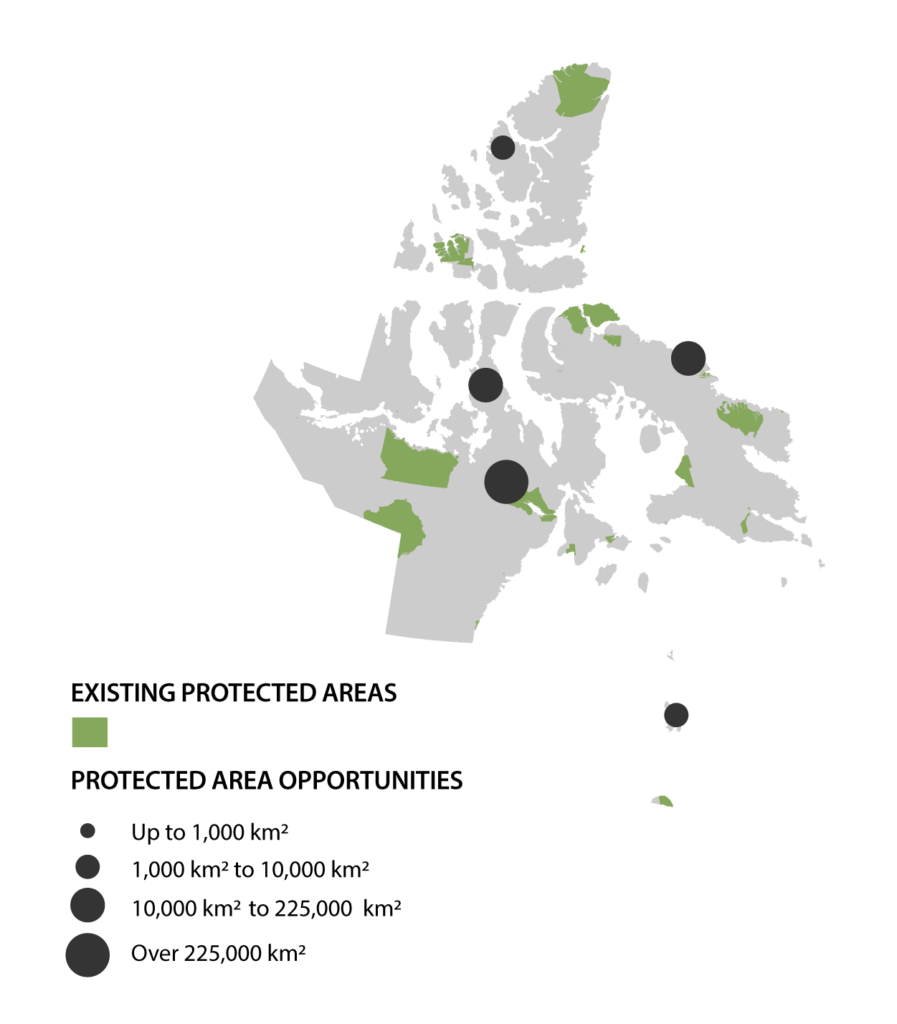
Highlights
-
Proposed 90,000 km² Aqviqtuuq IPCA led by Inuit.
-
Qikiqtait Protected Area planning continues.
Lowlights
-
Delays in approving the Nunavut Land Use Plan leave key areas vulnerable.
*in Other Effective Area-Based Conservation Measures (OECMs)
*Grade is based on progress made towards Canada’s 2020 protection targets

Highlights
-
Proposed 90,000 km² Aqviqtuuq IPCA led by Inuit.
-
Qikiqtait Protected Area planning continues.
Lowlights
-
Delays in approving the Nunavut Land Use Plan leave key areas vulnerable.
21.1%
protected
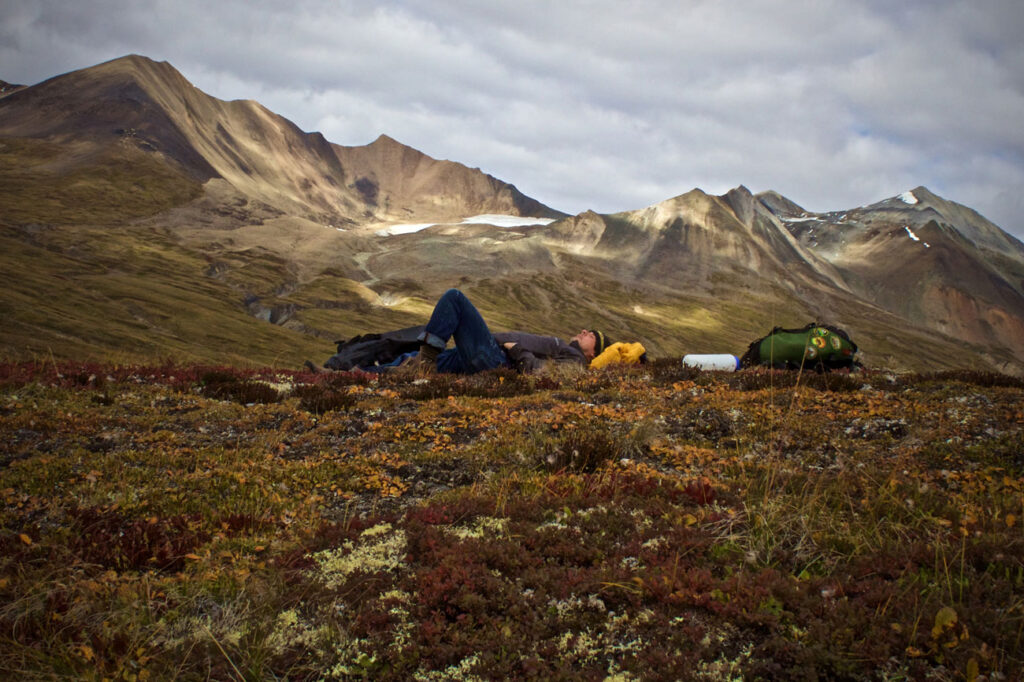
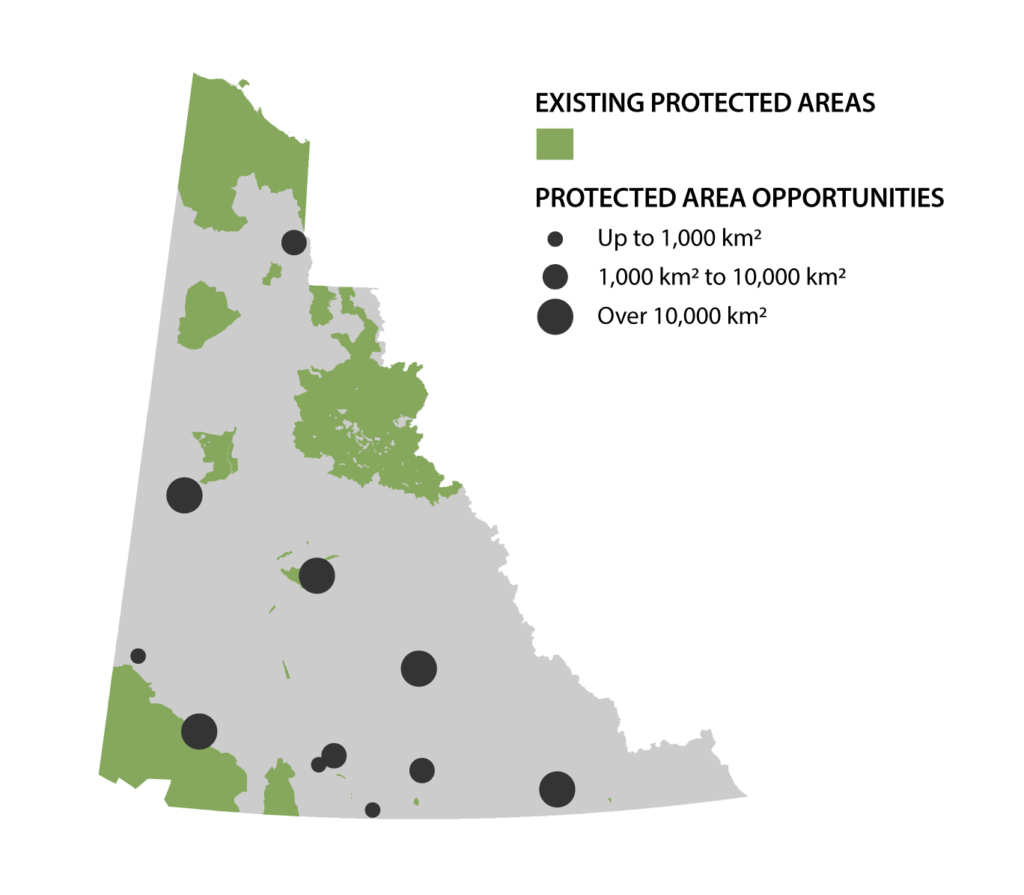
Highlights
-
Ross River Dena Council proposed a 35,000 km² Indigenous Protected and Conserved Area (IPCA).
-
Planning for a co-managed 3,000 km² national park in Peel Watershed.
-
Progress on Chasàn Chùa and Aullaviat/Anguniarvik conservation areas.
Lowlights
-
Government approved the Kudz Ze Kayah mine despite opposition from First Nations.
-
Yukon government challenging the Peel Watershed Plan in court.
Take Action to Protect Yukon’s Nature!
CPAWS is continually striving to establish protected areas on land and in the ocean, improve management of existing protected areas, and make progress on tackling climate change and protecting species at risk.
*in Other Effective Area-Based Conservation Measures (OECMs)
*Grade is based on progress made towards Canada’s 2020 protection targets

Highlights
-
Ross River Dena Council proposed a 35,000 km² Indigenous Protected and Conserved Area (IPCA).
-
Planning for a co-managed 3,000 km² national park in Peel Watershed.
-
Progress on Chasàn Chùa and Aullaviat/Anguniarvik conservation areas.
Lowlights
-
Government approved the Kudz Ze Kayah mine despite opposition from First Nations.
-
Yukon government challenging the Peel Watershed Plan in court.
Take Action to Protect Yukon’s Nature!
CPAWS is continually striving to establish protected areas on land and in the ocean, improve management of existing protected areas, and make progress on tackling climate change and protecting species at risk.
15.8%
protected
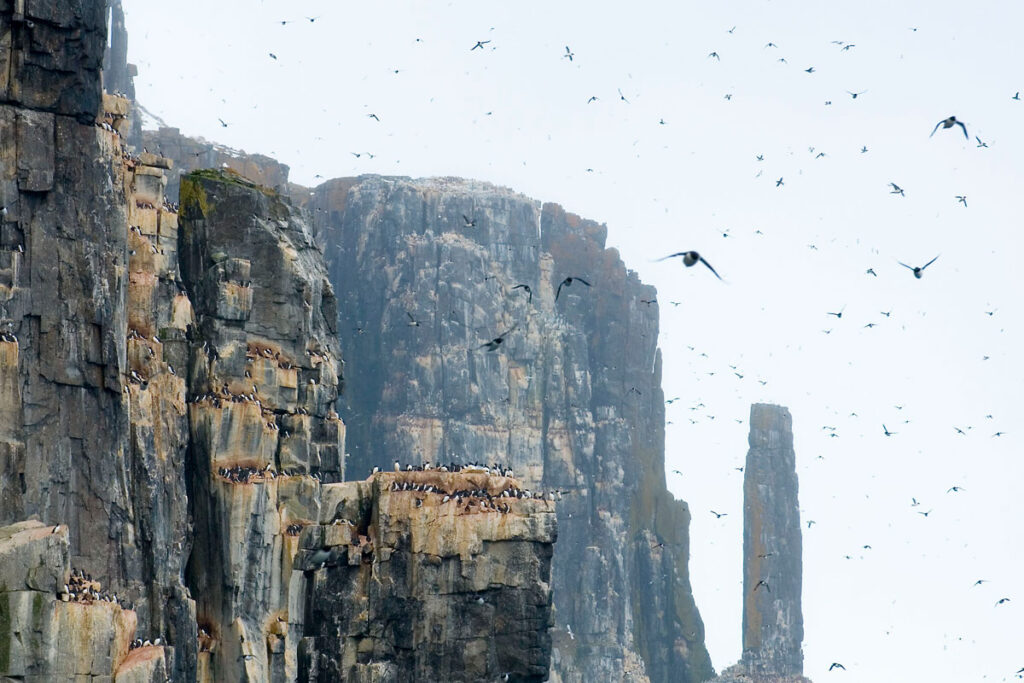
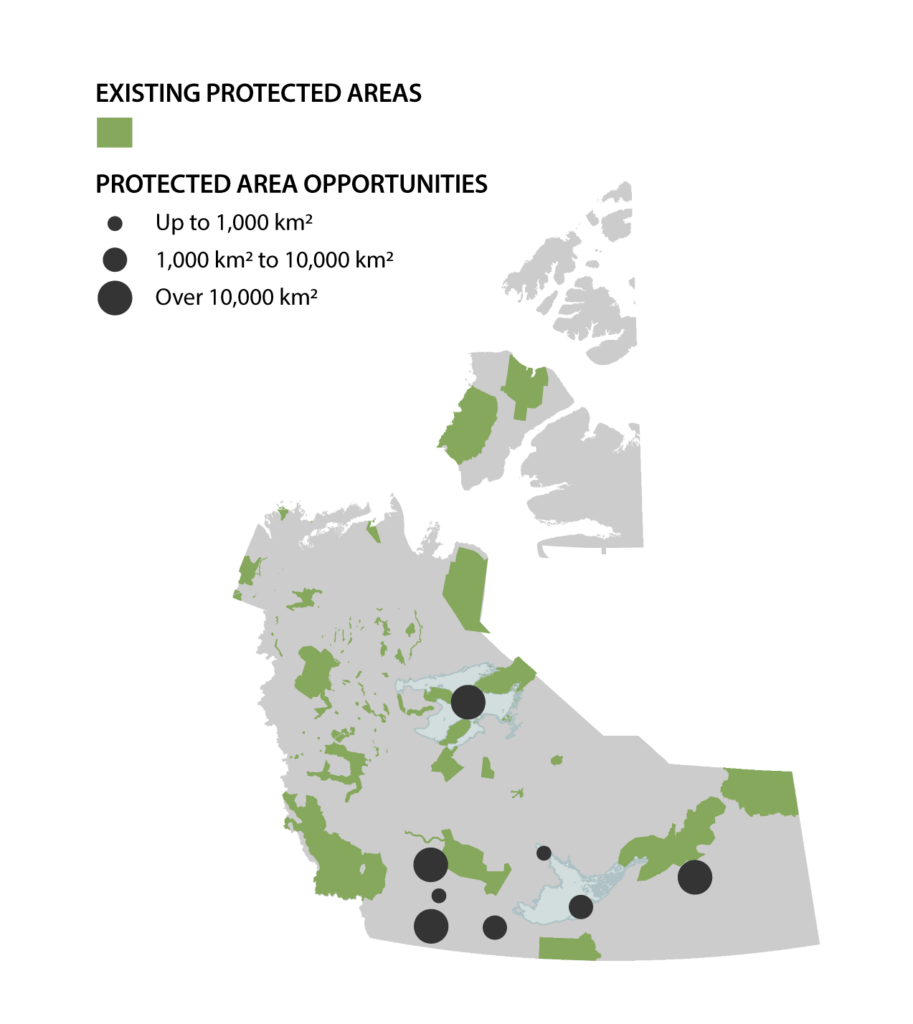
Highlights
-
180,000 km² Indigenous-led conservation initiative launched.
-
Indigenous and federal partners planning new conservation areas.
-
Progress on Slave River Delta IPCA and Dehcho Land Use Plan.
Lowlights
Nothing to mention.
Take Action to Protect Northwest Territories’ Nature!
CPAWS is continually striving to establish protected areas on land and in the ocean, improve management of existing protected areas, and make progress on tackling climate change and protecting species at risk.
*in Other Effective Area-Based Conservation Measures (OECMs)
*Grade is based on progress made towards Canada’s 2020 protection targets

Highlights
-
180,000 km² Indigenous-led conservation initiative launched.
-
Indigenous and federal partners planning new conservation areas.
-
Progress on Slave River Delta IPCA and Dehcho Land Use Plan.
Lowlights
Nothing to mention.
Take Action to Protect Northwest Territories’ Nature!
CPAWS is continually striving to establish protected areas on land and in the ocean, improve management of existing protected areas, and make progress on tackling climate change and protecting species at risk.
13.7%
protected
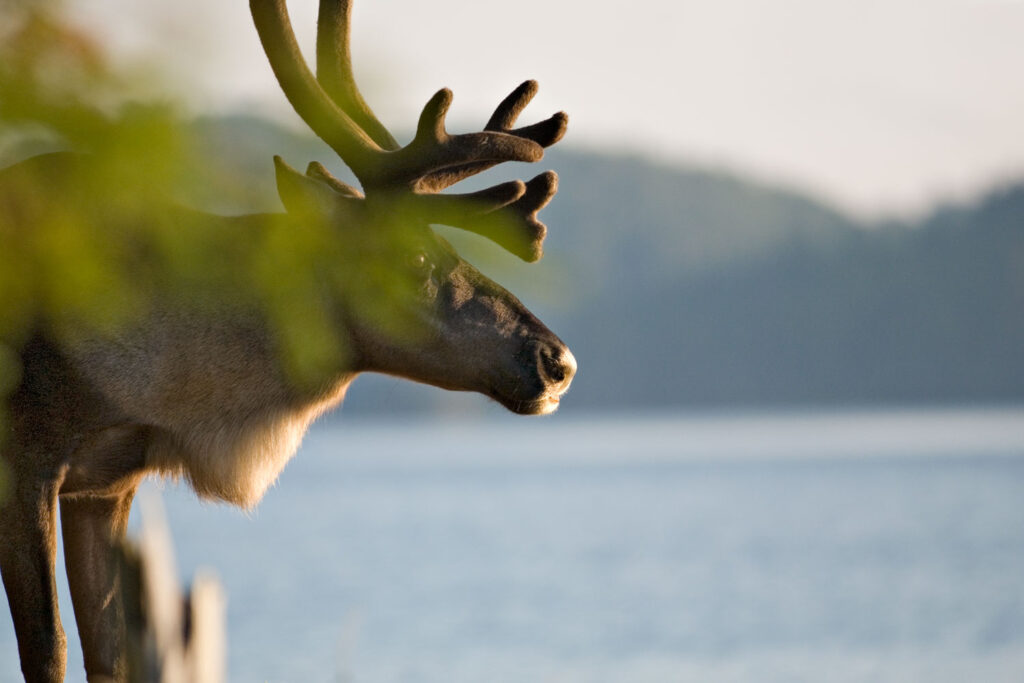
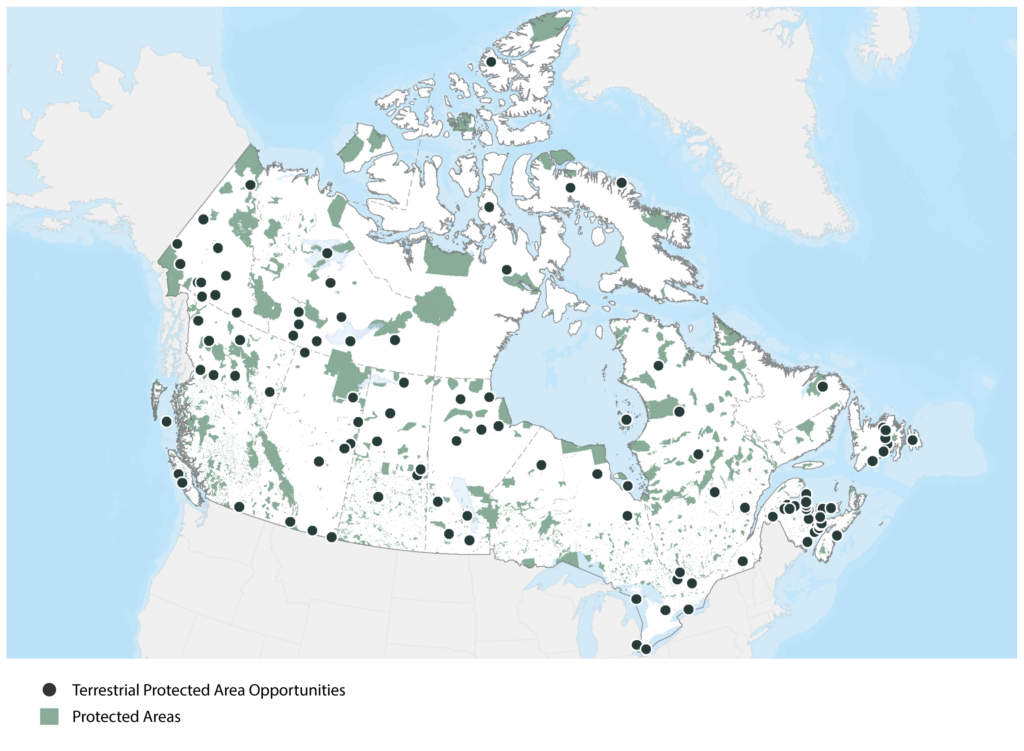
Highlights
-
Enhanced Nature Legacy (2021-2025): Canada invested $2.3 billion over five years to protect 30% of land and ocean by 2030.
-
Kunming-Montreal Global Biodiversity Framework (2022): Canada signed onto the global agreement to halt and reverse biodiversity loss.
-
Ecological Corridors (2022): Parks Canada launched a national program to connect key habitats.
-
New National Parks (2024): Pituamkek (Hog Island Sandhills), P.E.I., designated as Canada’s 48th National Park.
-
Seal River Watershed (2024): A memorandum of understanding between the Seal River Watershed Alliance and the Governments of Manitoba and Canada, was signed to explore an Indigenous Protected and Conserved Area (IPCA) and a National Park Reserve.
-
Canada’s 2030 Nature Strategy (2024): A national plan was released to meet biodiversity targets agreed to in the GBF.
-
Canada’s Nature Accountability Bill (2024): A proposed bill would legally enforce conservation commitments across Canada.
-
Caribou Protection (2024): Federal intervention to protect Boreal Caribou in Quebec.
Lowlights
-
Lack of Long-Term Funding (2024): No sustained funding for managing protected areas.
-
No Committed Funding for Parks (2024): Canada’s plan for new parks lacks financial backing.
Take Action to Protect Canada’s Nature!
CPAWS is continually striving to establish protected areas on land and in the ocean, improve management of existing protected areas, and make progress on tackling climate change and protecting species at risk.
*in Other Effective Area-Based Conservation Measures (OECMs)
*Grade is based on progress made towards Canada’s 2020 protection targets

Highlights
-
Enhanced Nature Legacy (2021-2025): Canada invested $2.3 billion over five years to protect 30% of land and ocean by 2030.
-
Kunming-Montreal Global Biodiversity Framework (2022): Canada signed onto the global agreement to halt and reverse biodiversity loss.
-
Ecological Corridors (2022): Parks Canada launched a national program to connect key habitats.
-
New National Parks (2024): Pituamkek (Hog Island Sandhills), P.E.I., designated as Canada’s 48th National Park.
-
Seal River Watershed (2024): A memorandum of understanding between the Seal River Watershed Alliance and the Governments of Manitoba and Canada, was signed to explore an Indigenous Protected and Conserved Area (IPCA) and a National Park Reserve.
-
Canada’s 2030 Nature Strategy (2024): A national plan was released to meet biodiversity targets agreed to in the GBF.
-
Canada’s Nature Accountability Bill (2024): A proposed bill would legally enforce conservation commitments across Canada.
-
Caribou Protection (2024): Federal intervention to protect Boreal Caribou in Quebec.
Lowlights
-
Lack of Long-Term Funding (2024): No sustained funding for managing protected areas.
-
No Committed Funding for Parks (2024): Canada’s plan for new parks lacks financial backing.
Take Action to Protect Canada’s Nature!
CPAWS is continually striving to establish protected areas on land and in the ocean, improve management of existing protected areas, and make progress on tackling climate change and protecting species at risk.
15.5%
protected
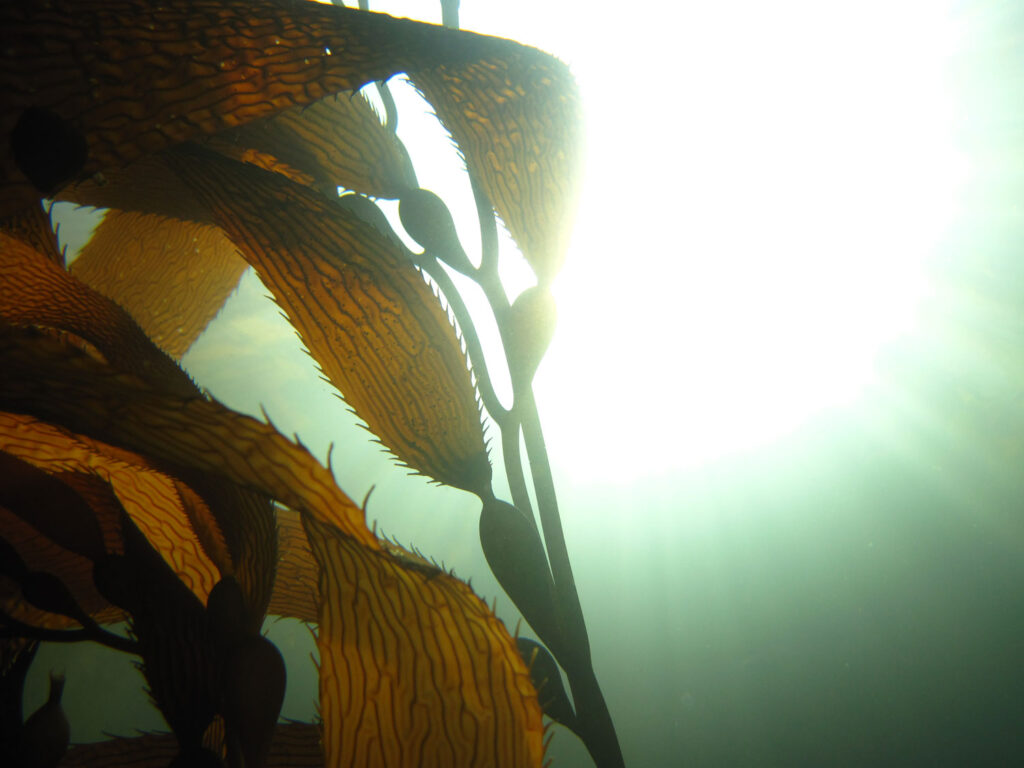
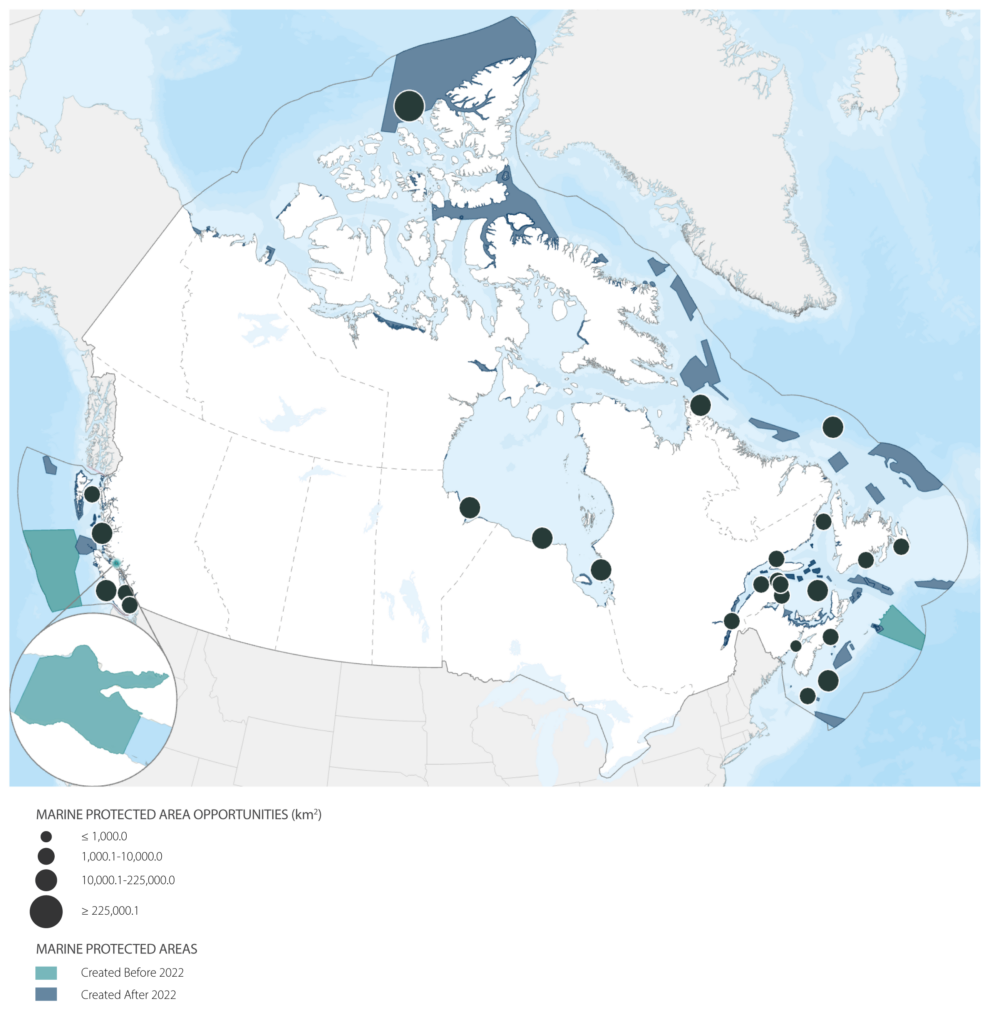
Highlights
-
Marine Other Effective Conservation Measures (OECM) Guidance (2022): Clear criteria set for marine OECMs.
-
IMPAC5 Conference (2023): Canada hosted a major international ocean protection conference. Fun fact: CPAWS acted as co-host!
-
Marine Protected Areas Standards (2023): Canada drafts standards to prohibit harmful human activities in new marine protected areas.
-
Expanding Marine Protection (2023): 17 new areas identified to meet conservation targets.
-
National Marine Conservation Areas Policy (2023): New policy emphasizes biodiversity conservation.
Lowlights
-
No Renewed Funding for Marine Spatial Planning (2024): Lack of continued investment slows progress.
Take Action to Protect Canada’s Nature!
CPAWS is continually striving to establish protected areas on land and in the ocean, improve management of existing protected areas, and make progress on tackling climate change and protecting species at risk.
*in Other Effective Area-Based Conservation Measures (OECMs)
*Grade is based on progress made towards Canada’s 2020 protection targets

Highlights
-
Marine Other Effective Conservation Measures (OECM) Guidance (2022): Clear criteria set for marine OECMs.
-
IMPAC5 Conference (2023): Canada hosted a major international ocean protection conference. Fun fact: CPAWS acted as co-host!
-
Marine Protected Areas Standards (2023): Canada drafts standards to prohibit harmful human activities in new marine protected areas.
-
Expanding Marine Protection (2023): 17 new areas identified to meet conservation targets.
-
National Marine Conservation Areas Policy (2023): New policy emphasizes biodiversity conservation.
Lowlights
-
No Renewed Funding for Marine Spatial Planning (2024): Lack of continued investment slows progress.
Take Action to Protect Canada’s Nature!
CPAWS is continually striving to establish protected areas on land and in the ocean, improve management of existing protected areas, and make progress on tackling climate change and protecting species at risk.
Latest News
- Responses to Questionnaire to the Federal Parties on Environmental PrioritiesA questionnaire representing the collective priorities of 16 leading environmental organizations was sent to Canada’s five main political parties
- Environmental organizations demand clarity on federal parties’ environmental plans ahead of electionCanada's leading environmental organizations have today released responses from federal parties on their environmental and climate plans.
- LEADERS, LEARNERS AND LAGGARDS LINE UP: CONSERVATION REPORT CARDS FOR CANADA ARE OUT… (SPOILER) FOUR PROVINCES ARE FAILINGMarch 19, 2025 – The Canadian Parks and Wilderness Society (CPAWS, Canada’s only charity dedicated to ... Read More
Blog
- Canada’s nature is worth fighting for "Protecting Canada's natural spaces isn't about politics,” says Schwartz. “It's about legacy. Nature is tied to our Canadian identity and is a source of pride."
- 📢THE GRADES ARE IN. WHICH PROVINCES AND TERRITORIES ARE LEARNING WHAT IT TAKES TO CONSERVE NATURE? 👨🏼🏫 These provinces and territories are making some effort — they’re showing up, doing bits of the work — but still have a lot to learn about what it takes to deliver high-quality, lasting conservation.
- Why Scrapping the federal Impact Assessment Act or Exempting Major Projects from impact assessments would be a Step Backward for Canada In the face of growing environmental challenges, Canada needs strong, modern policies that ensure economic prosperity and environmental protection are mutually reinforcing.


